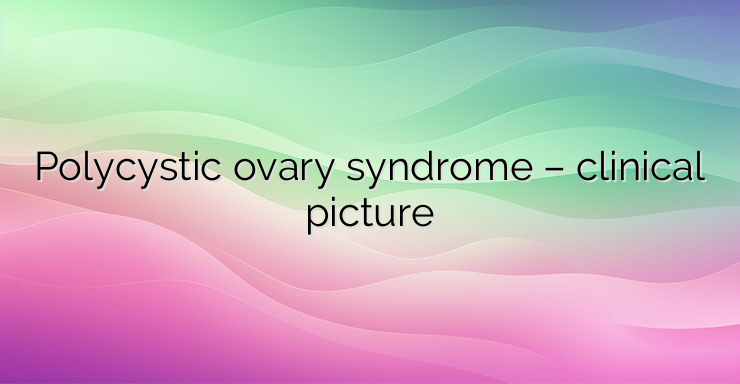Polycystic ovary syndrome (PCOS) is one of the most common reproductive disorders in women. It has a very diverse clinical presentation. CSP has three main components that are interrelated. These are anovulatory cycles, hyperandrogenemia and polycystic ovarian structure. One of the most common symptoms of PCOS is irregular periods. Disorders in the menstrual cycle reflect ovarian dysfunction and lack of ovulation. This is where the difficulties in getting pregnant in women with PCOS come from. Usually, PCOS occurs in girls after the onset of menarche (the period that marks the onset of the first period). During this period, anovulatory cycles are a common finding. In that case, how do we know there is a problem? Irregular periods are characteristic up to 1 year after menarche. Between 1 and 3 years after menarche, a normal cycle length is between 21 and 45 days. In women who have reached puberty, menstruation normally occurs between 21 and 35 days (average 28 days) or the presence of at least 8 periods per year. Any prolongation of the cycle beyond 90 days, occurring a year after menarche, is considered pathological. Unpredictable ovulation is one of the main causes of difficulty conceiving in women with PCOS. They are not sterile, but rather subfertile, i.e. can conceive spontaneously, but after prolonged attempts. Biochemical or clinical hyperandrogenism is seen in 60-100% of women with PCOS. Expression of hyperandrogenism are skin problems, such as acne, alopecia (baldness) and hirsutism (increased hair). The main problem lies in the pilo-sebaceous unit. This collective term describes an anatomical structure that consists of the hair follicle, hair shaft and accompanying sebaceous gland. The pilo-sebaceous unit is sensitive to the influence of male sex hormones (androgens). Their increased systemic or local levels stimulate the formation of sebum and the growth of terminal hair (thicker and darker hairs). Thus, women with hyperandrogenism are characterized by oily and acne-prone skin, as well as increased hair growth on androgen-dependent areas – face, shoulders, back, midline of the abdomen, inner thighs. Hair is also not spared from the action of androgens, and male pattern baldness can occur – in the area of the crown. Another characteristic symptom of PCOS is obesity and its resulting metabolic and cardiovascular complications. The redistribution of fat is male-type, i.e. in the abdomen (centripetal). The waist circumference exceeds 80 cm (the norm for women), and the waist/hip ratio is above 0.85 (with the norm for women below 0.8). Centripetal obesity is associated with multiple metabolic abnormalities, such as insulin resistance and impaired carbohydrate tolerance, and dyslipidemia. Insulin resistance is a common finding in PCOS. It significantly increases the risk of carbohydrate disorders such as prediabetes, gestational diabetes and type 2 diabetes.Hepatic steatosis (fatty liver) is a common finding in women with PCOS and obesity. Insulin resistance and hyperandrogenism increase the risk of obstructive sleep apnea syndrome in women with PCOS. Symptoms of sleep apnea include snoring, feeling tired after waking up, and daytime sleepiness. Sleep disturbances exacerbate insulin resistance and carbohydrate bias. Mood disorders and depression are significantly more common in women with PCOS. Quality of life and self-esteem are significantly impaired due to obesity, increased hair growth and acne, as well as reproductive problems. Women with PCOS more often have decreased libido and sexual dysfunction. Quality of life has been shown to improve after weight reduction and oral contraceptives to suppress hyperandrogenism. References: 1. Legro RS. Evaluation and Treatment of Polycystic Ovary Syndrome. 2017 Jan 11. Endotext [Internet]. South Dartmouth (MA): MDText.com, Inc.; 2000–. PMID: 25905194. 2. Teede HJ, Misso ML, Costello MF, Dokras A, Laven J, Moran L, Piltonen T, Norman RJ; International PCOS Network. Recommendations from the international evidence-based guideline for the assessment and management of polycystic ovary syndrome. Fertil Steril. 2018 Aug;110(3):364-379. doi: 10.1016/j.fertnstert.2018.05.004. Epub 2018 Jul 19. PMID: 30033227; PMCID: PMC6939856.


Leave a Reply